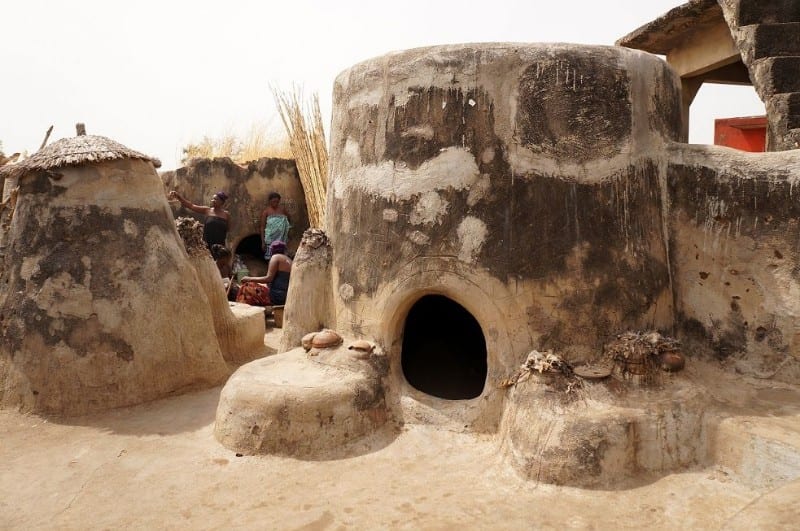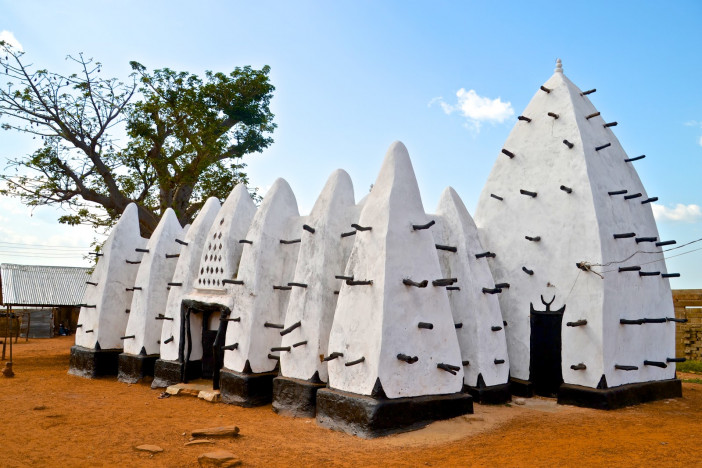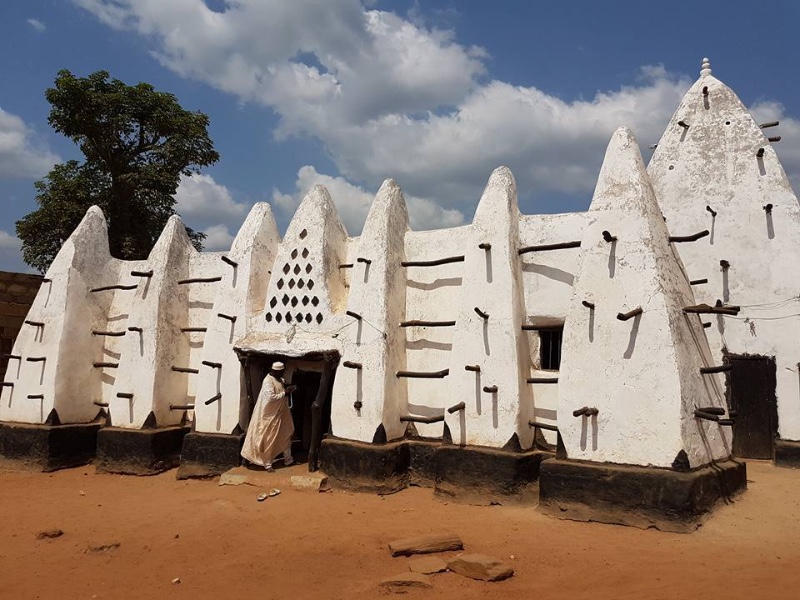Explore The Tongo Hills, The Larabanga Mosque – A Historical Hill and the Oldest Mosque in Ghana
The Tongo Hills, located in the Upper East Region of Ghana, are a series of rocky outcrops and hills with cultural and historical significance. Here are key points about the Tongo Hills:
- Location:
- The Tongo Hills are situated in the Upper East Region of Ghana, near the town of Tongo. The region is known for its unique landscapes, and the Tongo Hills stand out as a distinctive geological and cultural feature.
- Formation:
- The hills are characterized by their rocky formations and large granite boulders. They were formed through geological processes over millions of years, creating a rugged and picturesque terrain.

- Cultural and Spiritual Significance:
- The Tongo Hills hold cultural and spiritual importance for the Talensi people, who inhabit the area. The hills are believed to be sacred, and they play a central role in the traditional beliefs and rituals of the local communities.
- Tengzug Shrine:
- Within the Tongo Hills, there is a notable site called the Tengzug Shrine. This shrine is a sacred area where rituals and ceremonies take place. The shrine features natural rock formations and is considered a place of spiritual power.
- Rock Art:
- The Tongo Hills are known for ancient rock art, including petroglyphs and pictographs. These rock paintings are believed to date back hundreds or even thousands of years and provide insights into the historical and cultural practices of the region.
- Guided Tours:
- Visitors to the Tongo Hills often take guided tours led by local guides who share the cultural and historical significance of the area. The tours may include visits to the Tengzug Shrine, exploration of rock formations, and insights into local traditions.

- Hiking and Scenery:
- The Tongo Hills offer opportunities for hiking and trekking. The rocky terrain provides a unique and scenic backdrop for outdoor activities, and visitors can enjoy panoramic views of the surrounding landscapes.
- Community Engagement:
- Tourism in the Tongo Hills often involves community engagement, allowing visitors to interact with the local people, learn about their customs, and experience the rich cultural heritage of the region.

- Conservation Efforts:
- Due to the cultural and ecological significance of the Tongo Hills, there are efforts to promote sustainable tourism and conservation. Balancing tourism with the preservation of the natural and cultural integrity of the area is a key consideration.
Before planning a visit to the Tongo Hills, it’s advisable to check with local tourism authorities or community guides for the latest information on access, guided tours, and any cultural events that may coincide with your visit.
The Larabanga Mosque
The Larabanga Mosque is one of the oldest mosques in Ghana and is located in the Larabanga village in the Northern Region. Here are key points about the Larabanga Mosque:
- Location:
- Larabanga Mosque is situated in the Larabanga village, which is near Damongo in the Northern Region of Ghana.
- Age and History:
- The mosque is believed to date back to the 15th century, making it one of the oldest mosques in Ghana. It has a rich history and is considered a historic and cultural landmark.
- Architectural Style:
- The mosque is constructed in the Sudano-Sahelian architectural style, characterized by the use of mud and wooden materials. The building materials contribute to its distinct appearance.
- Unique Design:
- Larabanga Mosque is known for its unique design and traditional construction methods. The mosque has earned recognition for its cultural and architectural significance.
- Legend of Construction:

- According to local legend, the Larabanga Mosque was built by an Islamic trader who arrived in the area with a cow. The cow chose the current location of the mosque as a resting place, and the trader interpreted this as a divine sign to construct the mosque at that spot.
- Spiritual Significance:
- The mosque holds spiritual significance for the local Muslim community and is considered a sacred site. It continues to be a place of worship and attracts visitors interested in its historical and architectural value.
- Conservation Efforts:
- Over the years, efforts have been made to preserve and protect the Larabanga Mosque due to its historical importance. Conservation projects and awareness campaigns have aimed to maintain the integrity of the structure.
- Tourist Attraction:
- Larabanga Mosque has become a popular tourist attraction, drawing visitors interested in exploring Ghana’s cultural and historical heritage. The mosque and its surroundings offer a glimpse into the traditions of the local community.
- Proximity to Mole National Park:
- Larabanga is located near Mole National Park, one of Ghana’s largest wildlife reserves. Visitors often combine a visit to Larabanga Mosque with a trip to Mole National Park.

When visiting Larabanga Mosque, it is advisable to respect local customs and guidelines. Additionally, check with local authorities or guides for the latest information on access and any community guidelines for visitors.
